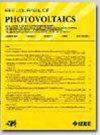A High Capacity Text Steganography Utilizing Unicode Zero-Width Characters
IF 2.6
3区 工程技术
Q3 ENERGY & FUELS
IEEE Journal of Photovoltaics
Pub Date : 2020-11-01
DOI:10.1109/iThings-GreenCom-CPSCom-SmartData-Cybermatics50389.2020.00116
引用次数: 2
Abstract
Information hiding based on text has become the hottest and most discussed aspect of steganography in recent years, because it eases communication and consumes less memory compared to other types. The lack of redundant information in a text file makes it difficult to hide secret bits into a carrier message (CM) without being noticeable. Therefore, the total amount of hidden bits embeddable in a CM contributes immensely to the system efficiency. Today, individuals share information online with the fear that it could be destroyed by third parties. To achieve a structured text hiding system with high embedding capacity, imperceptibility, robustness and high security concurrently, securing sensitive data through encryption is not enough because attackers are able to suspect that a communication channel exist between the sender and the receiver. Therefore, this paper combines both steganography and cryptography to protect our shared information and to achieve a strong and highly secured non understandable text hiding system. We proposed a method which uses pairs of Zero Width Characters (ZWC) to represent each 4-bit binary classification which provides a high embedding capacity and reduces computational complexity than previous methods. The embedding is done by placing the invisible strings of the secret message (SM) into a single position of the open spaces in the CM which provides high invisibility compared to the reviewed methods. One Time Pad (OTP) and XOR bitwise encryption is used to encrypt the inverted message before the embedding process which provides end-to-end security to the system. The experiment shows that the proposed method provides a very high embedding capacity and high robustness than other literature reviewed.利用Unicode零宽度字符的高容量文本隐写
基于文本的信息隐藏技术相对于其他类型的隐写技术更容易通信、占用内存更少,因此近年来成为隐写技术研究的热点和热点。文本文件中缺乏冗余信息使得将秘密位隐藏到载波消息(CM)中而不被注意变得困难。因此,CM中可嵌入的隐藏位的总量对系统效率有很大的贡献。如今,个人在网上分享信息时担心信息可能被第三方破坏。为了实现高嵌入容量、不可感知性、鲁棒性和高安全性的结构化文本隐藏系统,仅通过加密保护敏感数据是不够的,因为攻击者会怀疑发送方和接收方之间存在通信通道。因此,本文将隐写术和密码学相结合,以保护我们共享的信息,实现一个强大且高度安全的不可理解文本隐藏系统。我们提出了一种使用零宽度字符对来表示每个4位二进制分类的方法,该方法具有较高的嵌入容量,并且比以前的方法降低了计算复杂度。嵌入是通过将不可见的秘密消息字符串(SM)放置到CM中开放空间的单个位置来完成的,与所述方法相比,它具有较高的不可见性。在嵌入之前,采用单时间垫和异或位加密对反向消息进行加密,为系统提供端到端的安全性。实验表明,与已有文献相比,该方法具有很高的嵌入容量和鲁棒性。
本文章由计算机程序翻译,如有差异,请以英文原文为准。
求助全文
约1分钟内获得全文
求助全文
来源期刊

IEEE Journal of Photovoltaics
ENERGY & FUELS-MATERIALS SCIENCE, MULTIDISCIPLINARY
CiteScore
7.00
自引率
10.00%
发文量
206
期刊介绍:
The IEEE Journal of Photovoltaics is a peer-reviewed, archival publication reporting original and significant research results that advance the field of photovoltaics (PV). The PV field is diverse in its science base ranging from semiconductor and PV device physics to optics and the materials sciences. The journal publishes articles that connect this science base to PV science and technology. The intent is to publish original research results that are of primary interest to the photovoltaic specialist. The scope of the IEEE J. Photovoltaics incorporates: fundamentals and new concepts of PV conversion, including those based on nanostructured materials, low-dimensional physics, multiple charge generation, up/down converters, thermophotovoltaics, hot-carrier effects, plasmonics, metamorphic materials, luminescent concentrators, and rectennas; Si-based PV, including new cell designs, crystalline and non-crystalline Si, passivation, characterization and Si crystal growth; polycrystalline, amorphous and crystalline thin-film solar cell materials, including PV structures and solar cells based on II-VI, chalcopyrite, Si and other thin film absorbers; III-V PV materials, heterostructures, multijunction devices and concentrator PV; optics for light trapping, reflection control and concentration; organic PV including polymer, hybrid and dye sensitized solar cells; space PV including cell materials and PV devices, defects and reliability, environmental effects and protective materials; PV modeling and characterization methods; and other aspects of PV, including modules, power conditioning, inverters, balance-of-systems components, monitoring, analyses and simulations, and supporting PV module standards and measurements. Tutorial and review papers on these subjects are also published and occasionally special issues are published to treat particular areas in more depth and breadth.
 求助内容:
求助内容: 应助结果提醒方式:
应助结果提醒方式:


